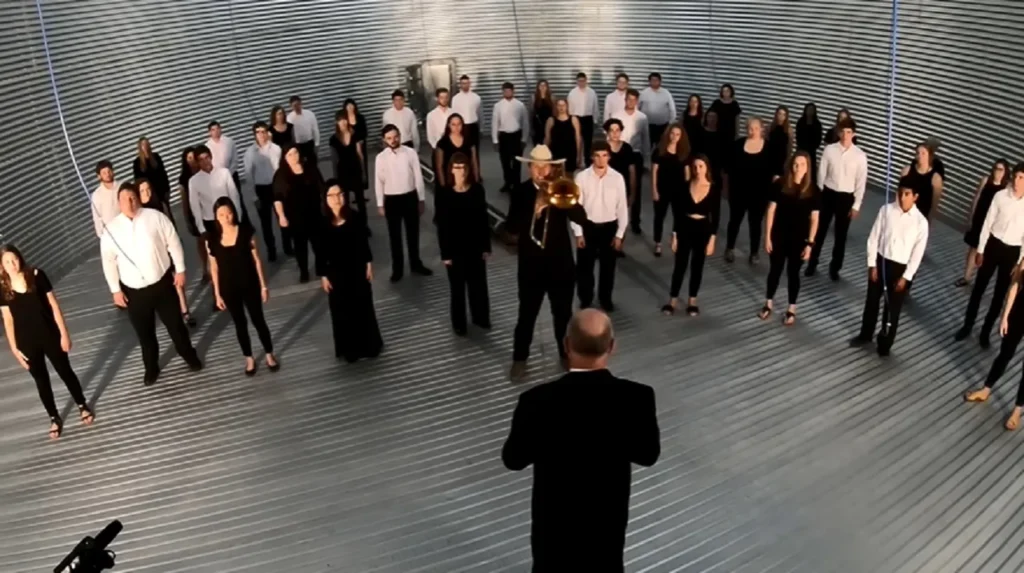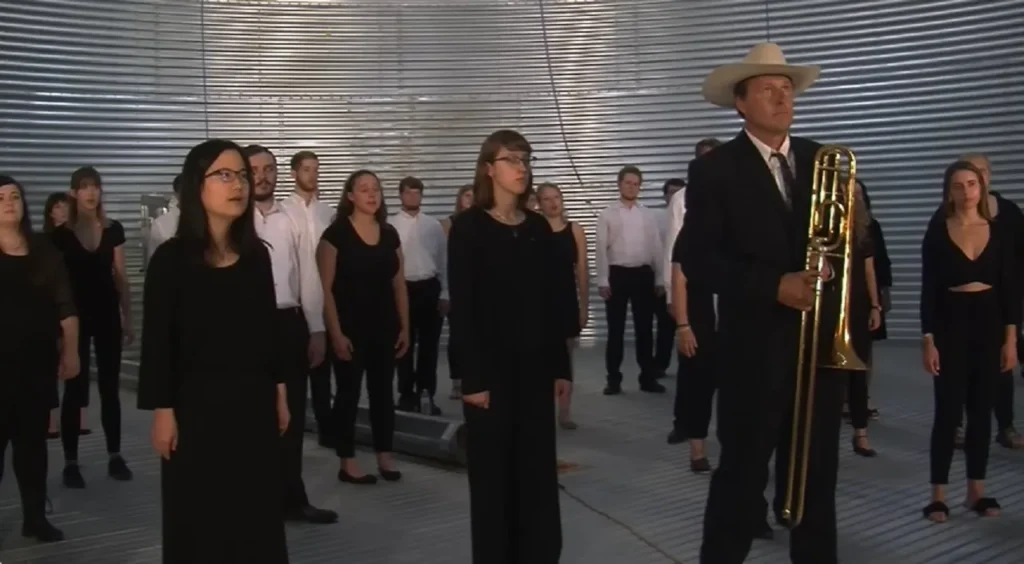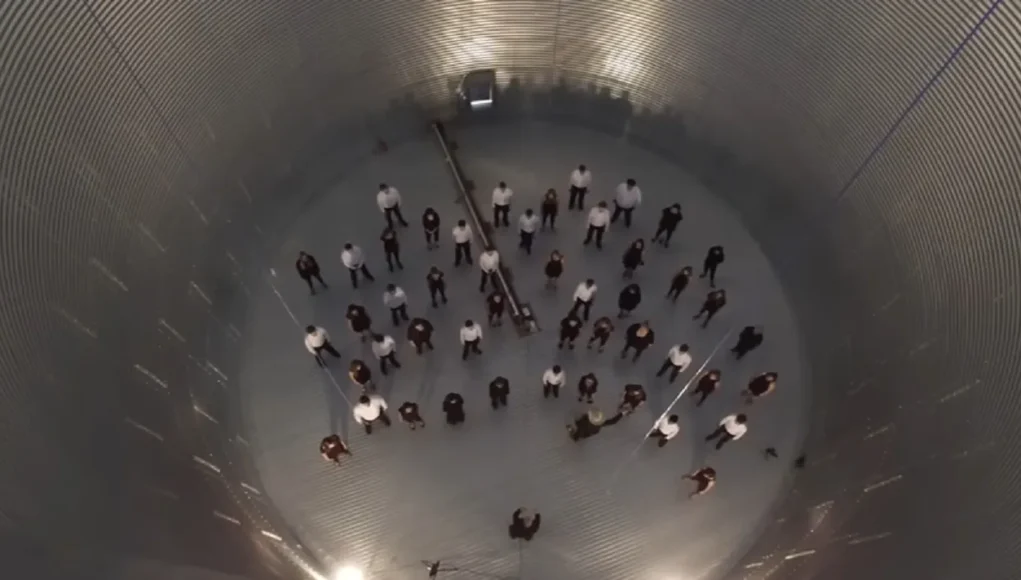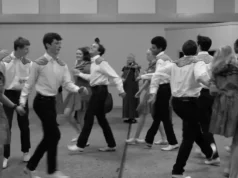There’s something universally moving about music performed in sacred spaces, places that amplify not only sound but emotion. But what if that sacred space wasn’t a Gothic cathedral or a grand concert hall, but an empty grain silo in the heart of the Midwest? This is where the Bethel College Choir, known for its innovative and boundary-pushing performances, delivered a rendition of the hymn Down to the River to Pray that has since been hailed as nothing short of extraordinary.

A Midwestern Icon Turned Concert Hall
The Midwest is known for its wide-open spaces, small towns, and towering grain silos. These cylindrical giants dot the landscape like sentinels, standing tall against the wind and sun. To most, they are a cue of the agricultural heartbeat of the region. Yet for the Bethel College Choir, one empty grain silo became something much more: an opportunity to merge the natural acoustics of an industrial space with the profound spirituality of sacred music.
This transformation of a seemingly ordinary structure into a vessel for something extraordinary is where the magic truly lies. When you think of a grain silo, “concert hall” probably isn’t the first description that comes to mind. But in the choir’s hands, that metallic cavern turned into something reverential, a space where steel and spirit came together in an unexpected harmony.
The Song that Stirred the Soul: Down to the River to Pray
Down to the River to Pray is a song steeped in history and soul. Its roots trace back to African American spirituals, and it gained widespread recognition with its use in the film O Brother, Where Art Thou?. The hymn’s lyrics beckon listeners to a place of reflection and redemption, as they conjure images of baptism, community, and spiritual renewal by the river’s edge.
But when the Bethel College Choir brought this song to life inside the towering silo, it wasn’t just the lyrics that called people to reflection—it was the sound itself. The steel walls of the silo, once filled with grain, now became filled with harmonies. Each note reverberated off the curved surfaces, sending echoes that seemed to hang in the air like a gentle mist. The experience was one of immersion, where sound wrapped around the listeners and pulled them into the music in a way that no traditional concert hall could replicate.
How Acoustics Turned Steel into Sanctity
One of the reasons this performance resonated so deeply with both the performers and the audience was the acoustics of the grain silo. Unlike a traditional concert venue with materials designed to enhance or mute sound as needed, the silo was raw. Its metallic walls provided a naturally rich echo, where soundwaves bounced and layered upon one another, creating a cascade of sonic textures.
For the Bethel College Choir, this meant that every note they sang didn’t just stop at the edge of the stage—it ascended, spiraled, and returned. The harmonies, already intricate, were given an additional dimension as they folded back on themselves. It was almost as if the silo itself was singing along, a resonant companion to the human voices inside it.
This natural amplification turned what could have been a simple hymn into a transcendent experience. Down to the River to Pray was no longer just a song; it became a spiritual encounter, magnified by the surroundings. The interplay between sound and space is something that can’t be entirely replicated, and it’s what made this performance so unforgettable.
The Performance as a Metaphor for Transformation
Beyond the obvious technical brilliance of using an industrial space for a musical performance, there’s something more symbolic happening here. The grain silo, once filled with the fruits of the earth, now held the voices of the human soul. In a way, it’s a powerful metaphor for transformation—the idea that even something as functional and utilitarian as a grain silo can be turned into a place of beauty, resonance, and spiritual significance.
This mirrors the journey of many people who come to music, or faith, or community looking for something more. They might not expect the transformation at first, but like the empty silo, they find themselves filled with something unexpected and profound. This is the story the Bethel College Choir told without ever having to say a word.
The Significance of Breaking Tradition
The decision to perform inside a grain silo was a conscious break from the traditional venues where choral performances usually take place. For the Bethel College Choir, it was about more than just experimenting with acoustics. It was about challenging the notion of where sacred music belongs. By bringing their voices into a space not designed for performance, they made a bold statement: beauty, sanctity, and art can be found anywhere, even in the most unexpected places.
In a world where art is often confined to curated spaces, this performance was a nudge that sometimes the most profound experiences come from breaking free of those confines. The grain silo became a stage, but it also became a symbol—a cue that even the ordinary can be transformed into something extraordinary with the right intention and a bit of creativity.

An Echo that Lasts
What makes the Bethel College Choir’s performance inside the grain silo so remarkable isn’t just the music itself, though that was undoubtedly stunning. It’s the way they redefined what a sacred space could be. By filling an empty silo with song, they transformed steel into sanctity, leaving an indelible mark on everyone who witnessed it.







